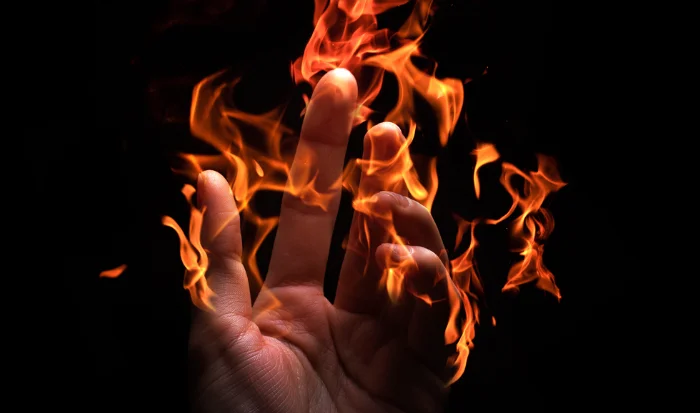In the blink of an eye, a burn injury can drastically alter the course of one’s life, leading to physical pain, emotional stress, and even lifelong scars. Whether it’s a splash from a boiling pot or a sudden encounter with a hot iron, burn injuries are more common than many realize. They often happen unexpectedly, catching individuals off guard. While these dangers are accurate, the silver lining is that many of these injuries are preventable. Significant reductions in these occurrences are achievable by understanding the risks and implementing precautionary measures. Heightened awareness and preparation are vital in a cozy home or fast-paced workplace environment. For those navigating the aftermath of such incidents, reaching out to a burn injury lawyer can be invaluable in securing the necessary support and guidance during recovery.
Statistics reveal a disconcerting frequency of burn injuries, underscoring a crucial need for prevention efforts. Each year, thousands of individuals endure the pain of burns that could have been mitigated with a little more awareness and care. Understanding the potential hazards and how to avert them safeguards your well-being and ensures the safety of those around you. In this detailed guide, we delve into the essence of protecting against burn risks, offering practical insights and steps to shield yourself and your loved ones.
Understanding Common Burn Hazards
Burn injuries manifest in numerous environments and sources, each with unique characteristics. In domestic settings, everyday items such as ovens, hair irons, and space heaters can pose significant risks. Often a household epicenter, the kitchen becomes a hotbed for such dangers with boiling pots, sizzling pans, and hot liquids all around. Moreover, bathroom scaldings from overly hot showers highlight the sometimes lurking hazards in our own homes.
Beyond the home, everyday occurrences like chemical exposures in workplaces or severe sunburns while enjoying a beach day illustrate how prevalent and diverse burn hazards can be. Recognizing these risks cannot be overstated; it is the fundamental first step toward enhancing personal safety.
Home Safety Tips for Preventing Burns
Your home is your sanctuary; it is crucial to ensure it is a haven from burn risks. Start by examining the temperature setting of your water heater. Industry standards recommend it be set below 120°F (49°C) to avoid unintentional scalding. This measure is significant in homes with children or elderly residents, who may have more sensitive skin.
Installing smoke detectors is another essential precautionary step. Placing these sensors in key areas, such as the kitchen and near bedrooms, can provide early warnings in the event of a fire, offering precious time to evacuate safely. Additionally, be cautious when handling hot liquids. Always use protective mitts and ensure handles are turned inward on the stove to prevent accidental spills. For homes with young children, childproofing kitchens and bathrooms should involve securing dangerous areas with locks or gates and keeping hot items well out of reach.
Workplace Safety: Minimizing Burn Risks
Safety often competes with productivity in the hustle and bustle of occupational environments. Yet, maintaining workplace safety, particularly about burns, should never be compromised. Employers must enforce the use of appropriate protective gear like gloves, goggles, and aprons in environments prone to burn hazards.
Regular safety training and drills ensure that all employees are well-versed in emergency procedures, increasing their readiness to act promptly and correctly. Moreover, carefully storing and labeling hazardous materials can prevent accidental burns, fostering a culture of awareness and caution that benefits everyone in the workplace.
First Aid Steps for Burn Injuries
Even with precautions, accidents can happen. Quick and proper first aid can significantly reduce the severity of a burn injury. The first step is to cool the burn immediately. Run cool (not cold) water over the affected area for at least ten minutes. This simple action can prevent further tissue damage and alleviate pain.
Next, cover the burn with a sterile cloth or bandage, avoiding any fluffy or adhesive material that might stick to the wound. It’s crucial not to apply ice, as this may compound the injury by causing frostbite. Refrain from using creams or oils, like butter, which can keep the heat in the skin and worsen the burn. Being prepared and knowing these initial steps is empowering, offering a swift response when needed.
When to Seek Medical Attention
Some burns are too severe to handle at home and require professional medical evaluation. Recognizing when a burn requires such attention can prevent complications and promote better healing outcomes. Burns that are particularly large or deep or those located on sensitive areas such as the face, hands, feet, or groin often need expert care.
Moreover, any signs of infection—such as increased redness, swelling, pain, or oozing—should prompt immediate medical consultation. Understanding these critical indicators ensures you or your loved ones receive the necessary treatment promptly, potentially averting more serious consequences.
The Importance of Fire Safety Education
Possessing knowledge of fire safety can profoundly decrease the incidence of burn injuries. Educational programs provide invaluable guidance on protecting oneself and others from fire hazards.
These programs often encompass strategies for preventing fires and instructions on safe evacuation techniques, equipping communities with the tools to react confidently in the face of danger. Individuals protect themselves and contribute to a safer society by investing in fire safety education.

Shannon Reyes is a seasoned writer with a knack for crafting engaging blogs on a variety of service industries, including plumbing, cleansing, moving, pest control, and roofing. With a keen eye for detail and a passion for helping readers navigate complex topics, Shannon brings her expertise to life through informative and accessible content.











